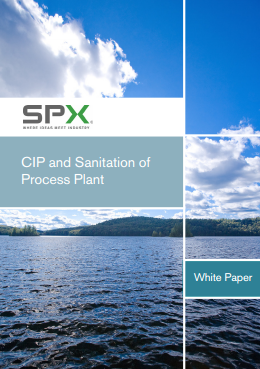Impianti di lavaggio CIP
Impianti di lavaggio CIP
Descrizione
Il Clean In Place (CIP) è un sistema di pulizia automatico, incorporato nell’equipaggiamento da pulire, che realizza un ricircolo, a determinate pressioni e/o temperature, dei liquidi detergenti e delle soluzioni per il risciacquo. Questo sistema di lavaggio viene utilizzato per assicurare che le linee produttive siano depurate dai contaminanti organici ed inorganici. Gli impianti CIP sono costituiti da serbatoi per i vari liquidi impiegati, pompe per il ricircolo dei fluidi e stazioni per il riscaldamento dei medesimi. Tutte le operazioni di lavaggio e risciacquo vengono gestite elettronicamente.
I processi CIP consentono la pulizia delle attrezzature produttive senza che queste debbano essere spostate o disassemblate. Per questo però l’applicazione del sistema CIP all’equipaggiamento deve essere ipotizzata fin dalla fase di progettazione dell’impianto in quanto modifiche appositamente realizzate sugli equipaggiamenti da pulire per poter sfruttare questa tecnologia sono tendenzialmente difficoltose e onerose. Nei CIP a doppia fase, così chiamato perché si effettuano due passaggi di lavaggio in successione uno all’altro, i prodotti chimici normalmente utilizzati sono:
- soluzioni caustiche in grado di rimuovere gli strati di grassi e proteine;
- soluzioni acide per eliminare i depositi minerali.
Esiste altresì la possibilità di realizzare il lavaggio con un’unica fase (quella alcalina): in questo caso sono utilizzati agenti chelanti (quali ad esempio EDTA) che, reagendo con calcio e altri metalli, destrutturano i depositi e ne facilitano l’eliminazione. In entrambi i casi vanno valutati gli aspetti negativi: i sistemi a singola fase richiedono l’impiego di sostanze che, come nel caso dell’EDTA, hanno dimostrato di creare problemi ambientali non trascurabili; viceversa nei sistemi a doppia fase i consumi di acqua, reagenti ed energia saranno maggiori.
Vantaggi ambientali
Gli impianti CIP permettono di utilizzare acqua e detergenti nelle quantità strettamente necessarie e dunque di evitare sprechi; spesso sono dotati di sistemi di depurazione, tramite sedimentazione e ultrafiltrazione, funzionali al riutilizzo delle soluzioni detergenti, che vengono ad esempio impiegate per il pre-risciacquo delle apparecchiature. Campo d’applicazione Aziende agroalimentari.
_________
CIP and Sanitation of Process Plant
Cleaning and sanitisation of process plant is one of the most critical aspects of food processing to ensure the health and safety of the consumer. Proper cleaning is essential for the
production of high quality food products especially those with extended shelf life.
Cleaning-in-Place (CIP) is now a very common practice in many dairy, processed food, beverage and brewery plant replacing manual strip down, cleaning and rebuilding of process systems. The primary commercial advantage is a substantial reduction in the time that the plant is out of production and the ability to utilise more aggressive cleaning
chemicals in a contained environment which cannot be safely handled with manual cleaning.
The definition of CIP is given in the 1990 edition of the Society of Dairy Technology manual “CIP: Cleaning in Place” as: “The cleaning of complete items of plant or pipeline circuits without dismantling or opening of the equipment, and with little or no manual involvement on the part of the operator. The process involves the jetting or spraying of surfaces or circulation of cleaning solutions through the plant under conditions of increased turbulence and flow velocity.”
CIP is not simply the provision of a CIP bulk unit but the integrated process and hygienic design of the complete process. A CIP system will consist of vessels for preparation and storage of cleaning chemicals, pumps and valves for circulation of the CIP chemicals throughout the plant, instrumentation to monitor the cleaning process and vessels to recover the chemicals
CIP, or Cleaning-in-Place, is a critical process hygiene aspect that helps to ensure the health and safety of the consumer.
This white paper discusses the concept of cleanability by looking at the materials, finish, welding and design features that play a major role in effective CIP systems. It goes on to examine
the various methods of CIP cleaning. Finally it takes a brief look at new CIP technology using electro-chemically activated water
in cleaning and sanitising solutions.
Together with its other processing solutions, SPX offers a comprehensive platform of skid-mounted CIP solutions (FX Systems). All SPX CIP solutions can be automated as an
additional safety measure and in order to document the CIP operation.
The SPX Innovation Centre in Denmark offers Pilot testing and application solution guidance services to help customers maximize the performance of their plant. Pilot testing can also be conducted on customers’ own premises based on rental equipment and, if required, with support from SPX experts.
SPX 2008
Correlati
EN 1672-2 Macchine industria alimentare: Requisiti di igiene - Testo requisiti
































